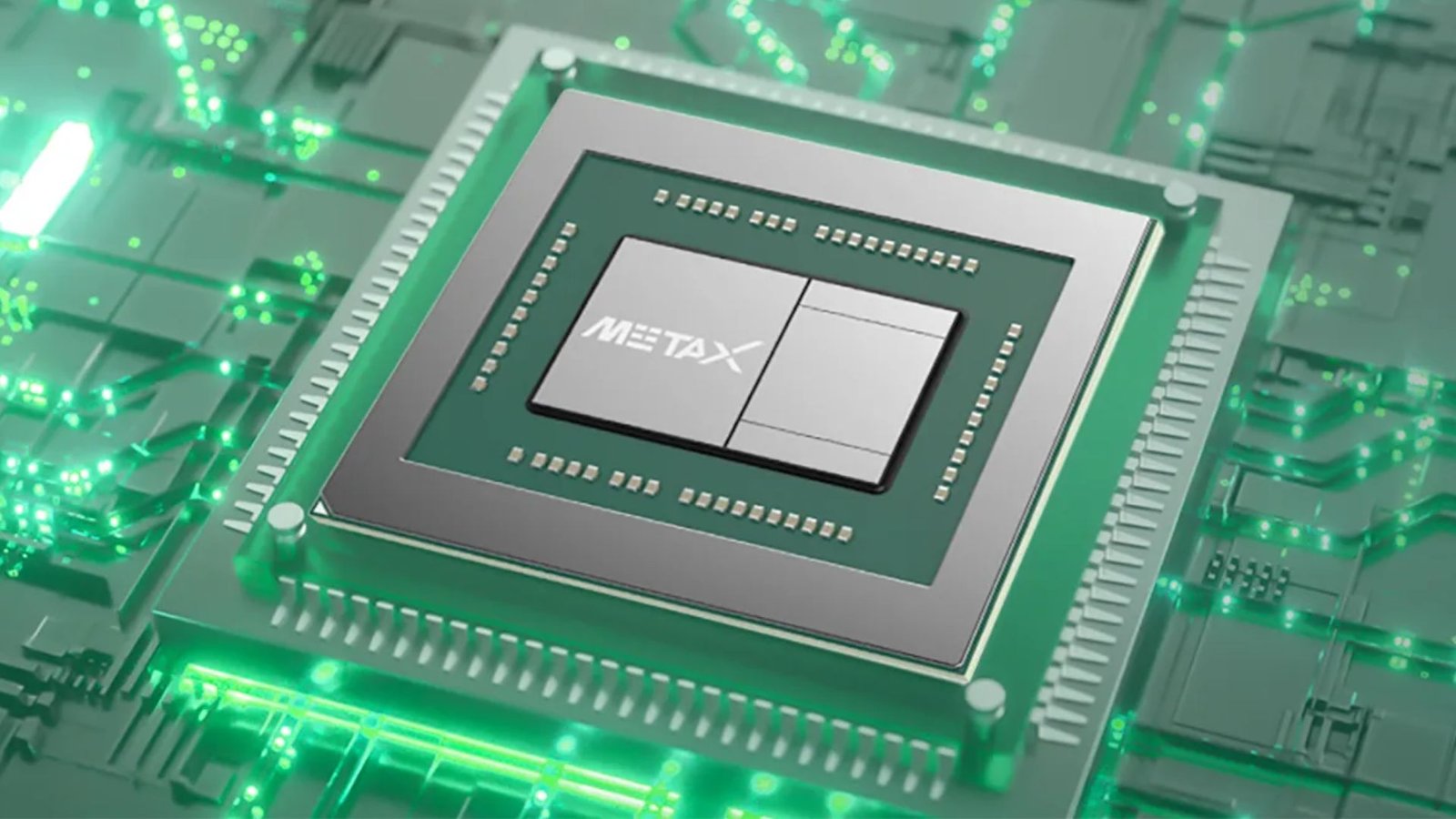Tools & Platforms
Trucking Tech Today: Key software and AI updates shaping fleet safety and efficiency

New McLeod Software update adds web-based tools for dispatch and load tracking
McLeod Software has launched Version 25.2 of its transportation management solution (TMS), delivering a redesigned user experience for freight brokers and carriers. The release introduces enhancements to LoadMaster, PowerBroker, DocumentPower, and MPact that aim to reduce complexity, increase visibility, and improve decision-making.
“Working hand in hand with our customers, we completely re-engineered the user experience with this release—transforming the way they work by delivering faster performance, greater power, and a refreshingly intuitive feel,” Tom McLeod, CEO and founder of McLeod Software, said.
LoadMaster//web now allows access to dispatch and load management tools from any location with an internet connection, while PowerBroker//web adds features such as multi-select load planning and automated status updates. The release also introduces role-based dashboards, AI-assisted communication tools, and expanded options for driver communication and document management. Learn more…
Motive and Fleetio expand integration to improve fleet maintenance and cost control
Motive and Fleetio recently announced an expanded integration that centralizes fuel, maintenance, and telematics data to reduce manual tasks and improve fleet visibility. This integration introduces automated two-way DVIR syncing to strengthen compliance and fuel transaction syncing to streamline cost tracking and IFTA reporting.
“This integration brings together fuel, telematics, and maintenance data in a way that helps companies not just react to challenges but get ahead of them,” Stefano Daneri, fleet ecosystem strategist at Fleetio, said. “It’s all about turning data into action, action into uptime, and uptime into long-term performance.”
Since 2018, the two companies have partnered to unify maintenance and telematics data, and the expanded integration now delivers predictive insights and AI-driven automation to improve safety, compliance, and cost control for fleets. Learn more…
See also: Clark: How AI helps fleet managers avoid drowning in data
Carrier Logistics FACTS platform improves efficiency for BSP Trans operations
Carrier Logistics (CLI) announced that BSP Trans has achieved operational improvements after adopting the FACTS transportation management system.
“FACTS has reduced the time spent on administrative processes and by our drivers, lowered our costs in measurable ways, and ultimately improved customer service for our shippers,” John McKenna, VP of operations at BSP Trans, said.
BSP Trans, based in Londonderry, New Hampshire, operates six terminals across New England and maintains a fleet of 70 power units and more than 150 trailers for airfreight and linehaul services. The carrier uses FACTS to manage dispatch, driver operations, rating, and back-office tasks while also leveraging AI-enabled features like route optimization, customer scheduling, and dock management. CLI President Ben Wiesen stated that BSP Trans has already realized greater efficiency and cost savings while gaining a scalable platform to support long-term service and growth. Learn more…
Noregon launches DLA+ 3.0 XBT adapter for commercial vehicle diagnostics
Noregon has launched the DLA+ 3.0 XBT, the latest addition to its DLA family of adapters, designed to connect shop devices to all makes of commercial vehicles and heavy-duty equipment for diagnostics and inspections. The adapter offers both wired and wireless connectivity, including Bluetooth pairing through an exterior button for faster connections, which inspired the “XBT” name.
“The release of this innovative adapter is another step toward ensuring technicians have the tools they need to fix all fleet vehicles and equipment,” Brian Sexton, product manager for Noregon, said.
The device is future-proofed with compatibility for Diagnostics over Internet Protocol (DoIP), the ability to measure electrical properties, and Smart Cable technology for auto-detection of cable types. RP1210C-compliant and compatible with JPRO as well as most major OE diagnostic software, the DLA+ 3.0 XBT is available on Noregon’s website and included in adapter kit bundles. Learn more…
Fleetworthy expands AI strategy to improve fleet safety and compliance
Fleetworthy recently announced advances in its enterprise-wide artificial intelligence (AI) capabilities, integrating AI across its solutions to improve safety, compliance, toll management, and weigh station bypass. The company’s AI strategy emphasizes streamlining operations, reducing costs, and enhancing decision-making while maintaining a responsible approach to adoption.
“At Fleetworthy, we believe the future of fleet management is powered by intelligent technology that supports the people behind the wheel and in the back office,” Shay Demmons, CPO of Fleetworthy, said. “Our AI strategy is built on delivering practical, high-impact solutions that make fleets safer, more efficient, and more prepared for what’s next. By integrating AI across our product portfolio, we’re helping our customers unlock real operational value today while laying the groundwork for the predictive, connected fleet technology of tomorrow.”
The strategy includes continuous monitoring with AI alerting to identify risks, AI-powered audit readiness to address compliance issues proactively, and predictive toll intelligence to forecast costs and optimize routes. Fleetworthy has also enhanced its AI capabilities across its major brands, including Bestpass and Drivewyze. Learn more…
Tools & Platforms
Latanya Sweeney on Time magazine’s list of 100 Most Influential People in AI — Harvard Gazette

Latanya Sweeney, Daniel Paul Professor of Government and Technology, has been named to Time magazine’s 2025 list of the 100 most influential people in the field of artificial intelligence.
Now in its third year, the Time list recognizes innovators, advocates, policymakers, and artists whose work is shaping the future of artificial intelligence. Sweeney is featured alongside figures such as Sam Altman, Elon Musk, and Mark Zuckerberg, underscoring the global impact of her contributions to privacy, data governance, and public interest technology.
Sweeney, a computer scientist who served as the chief technologist of the Federal Trade Commission and founded Harvard’s Public Interest Tech Lab, is a pioneer in data privacy. Her early research on k-anonymity and re-identification founded the field of data privacy, identified algorithmic bias for the first time, and helped shape national policy which remains foundational to multiple fields.
At Harvard, she has built a platform for training new technologists, advancing research on technology’s social impacts, and launching tools that serve the public good.
Among recent projects highlighted by Time are MyPrivacyPolls, a secure platform for whistleblowers to share information anonymously, and studies on the role of technology in voter registration and elections. Sweeney also co-authored a new framework for AI Data Communities, which enables small and medium-sized companies to share data to build AI tools without compromising privacy.
“I am deeply honored by this recognition, but it truly reflects the dedication, creativity, and vision of so many colleagues I’ve been fortunate to work alongside at Harvard,” said Sweeney. “From my time as FAS co-chair on AI to building the Public Interest Tech Lab at the Kennedy School, and engaging with the broader public interest technology community, I’ve seen firsthand how much is possible when we approach technology with democracy, equity, and accountability at the center. I am profoundly grateful for the encouragement, collaboration, and support of the remarkable community at Harvard.”
Beyond her research, Sweeney is a prominent voice in policy discussions, testifying before Congress and contributing to national debates on the ethical use of technology. Through both scholarship and advocacy, she works to amplify the public interest in technology governance. Her selection to the Time list reflects her influence at the intersection of technology and society, and her leadership in steering AI toward outcomes that benefit all.
Source link
Tools & Platforms
China unveils ‘world’s first’ brain-like AI, 100x faster on local tech

Researchers at the Chinese Academy of Sciences’ Institute of Automation in Beijing have introduced a new artificial intelligence system called SpikingBrain 1.0.
Described by the team as a “brain-like” large language model, it is designed to use less energy and operate on homegrown Chinese hardware rather than chips from industry leader Nvidia.
“Mainstream Transformer-based large language models (LLMs) face significant efficiency bottlenecks: training computation scales quadratically with sequence length, and inference memory grows linearly,” said the researchers in a non-peer-reviewed technical paper.
According to the research team, SpikingBrain 1.0 performed certain tasks up to 100 times faster than some conventional models while being trained on less than 2% of the data typically required.
This project is part of a larger scientific pursuit of neuromorphic computing, which aims to replicate the remarkable efficiency of the human brain, which operates on only about 20 watts of power.
“Our work draws inspiration from brain mechanisms,” added the researchers.
To replicate efficiency of human brain
The core technology behind SpikingBrain 1.0 is known as “spiking computation,” a method that mimics how biological neurons in the human brain function.
Instead of activating an entire vast network to process information, as mainstream AI tools like ChatGPT do, SpikingBrain 1.0’s network remains mostly quiet. It uses an event-driven approach where neurons fire signals only when specifically triggered by input.
This selective response is the key to reduced energy consumption and faster processing time. To demonstrate their concept, the team built and tested two versions of the model, a smaller one with 7 billion parameters and a larger one containing 76 billion parameters. Both were trained using a total of approximately 150 billion tokens of data, a comparatively small amount for models of this scale.
The model’s efficiency is particularly notable when handling long sequences of data. In one test cited in the paper, the smaller model responded to a prompt consisting of 4 million tokens more than 100 times faster than a standard system.
In a different test, a variant of SpikingBrain 1.0 demonstrated a 26.5-fold speed-up over conventional Transformer architectures when generating just the first token from a one-million-token context.
Stable performance
The researchers reported that their system ran stably for weeks on a setup of hundreds of MetaX chips, a platform developed by the Shanghai-based company MetaX Integrated Circuits Co. This sustained performance on domestic hardware underscores the system’s potential for real-world deployment.
These potential applications include the analysis of lengthy legal and medical documents, research in high-energy physics, and complex tasks like DNA sequencing, all of which involve making sense of vast datasets where speed and efficiency are critical.
“These results not only demonstrate the feasibility of efficient large-model training on non-NVIDIA platforms, but also outline new directions for the scalable deployment and application of brain-inspired models in future computing systems,” concluded the research paper.
Tools & Platforms
Lanai’s edge-based observability agents aim to seek out and shut down shadow AI

AI monitoring startup Lanai Inc. says it’s ready to tackle the growing risk presented by “shadow” artificial intelligence with the launch of its new observability agent, which runs so-called “detection models” directly on corporate devices, instead of routing conversations through centralized cloud infrastructure.
Lanai says its AI Observability Agent is the next step in AI governance, eliminating the risks associated with employees who use unauthorized chatbots and services. It provides full visibility into employee’s generative AI interactions across any application, without sending data outside of an organization’s own network.
The startup believes that “shadow AI” has become an acute crisis for enterprises, citing a study by LayerX Ltd. that shows more than 89% of all enterprise AI usage is completely invisible to information technology and security teams. That’s because employees are doing things such as using personal ChatGPT accounts for work to increase their productivity, while software engineers employ unauthorized tools such as Codeium and Cursor to help write code faster. In addition, many workers blithely feed sensitive information into the AI features embedded in platforms such as Salesforce, Adobe and Microsoft 365, without their supervisors knowing about it.
That’s problematic, according to Lanai co-founder and Chief Executive Lexi Reese, because it means security teams are being asked to secure things that they cannot see. “The shadow AI problem is exploding as employees are using personal accounts, unapproved coding agents and embedded AI features in everyday SaaS tools, and this all sits outside IT’s visibility,” she said. “Traditional tools might catch someone visiting ChatGPT.com, but they have no idea if that employee just shared company trade secrets or a client’s sensitive revenue information.”
Reese said Lanai’s AI Observability Agent embeds lightweight observability models onto every employee’s device to bring this activity out of the shadows and add guardrails to ensure that sensitive information is not being shared with third-party AI, ensuring safety without sacrificing speed or innovation.
Lanai’s observability agents can be integrated with existing data management tools within 24 hours or less, and enable dynamic detection across any application employees use, without the need to create static lists. They carry out prompt and response analysis in real time to ensure no sensitive data or workflow insights are being leaked, with all of the processing done on the employee’s device.
By using Lanai as a source of intelligence into what AI tools people are using, companies can approve the services that are most useful and shut down others to protect vast amounts of data, the startup said.
To demonstrate how effective its platform is, Lanai gave some insights into how early adopters have been able to scale back shadow AI without hurting productivity. For instance, it cites one Fortune 500 tech company, which found that its software engineers were using 12 different coding agents, feeding them volumes of sensitive information on a daily basis. That customer used Lanai’s agents to identify the best performing coding agents and work out which ones were suitable for approval.
Those that met its requirements were then scaled across departments, while unauthorized tools were blocked. The result: Productive AI usage soared by 300%.
Similarly, a healthcare organization found that its more than 20,000 employees were using 34 different AI tools, despite only five being approved. That included doctors feeding patient data into their personal ChatGPT accounts and developers using unauthorized agents to write code for regulated software applications. By implementing automated controls, it saw an 80% reduction in data exposure incidents in just 90 days.
Lanai also points to the example of an unnamed financial services firm, which discovered that 73% of its total AI usage was through personal accounts. It shut down unauthorized usage and identified the best-performing approved AI tools to help the company eliminate $700,000 in annual costs on unnecessary services.
Lanai’s other co-founder Steve Herrod said the company has ambitions to become the “Datadog of AI” by identifying and securing the AI services that bring the most benefits to enterprises, while shutting down the rest.
“We’re moving AI observability from the network to the edge,” he said. “It’s like the shift from monitoring server rooms to having telemetry inside every virtual machine. Whereas traditional approaches see network traffic, we see the actual prompts and responses, which are where the real risks and value live.”
Image: SiliconANGLE/Microsoft Designer
Support our mission to keep content open and free by engaging with theCUBE community. Join theCUBE’s Alumni Trust Network, where technology leaders connect, share intelligence and create opportunities.
- 15M+ viewers of theCUBE videos, powering conversations across AI, cloud, cybersecurity and more
- 11.4k+ theCUBE alumni — Connect with more than 11,400 tech and business leaders shaping the future through a unique trusted-based network.
About SiliconANGLE Media
Founded by tech visionaries John Furrier and Dave Vellante, SiliconANGLE Media has built a dynamic ecosystem of industry-leading digital media brands that reach 15+ million elite tech professionals. Our new proprietary theCUBE AI Video Cloud is breaking ground in audience interaction, leveraging theCUBEai.com neural network to help technology companies make data-driven decisions and stay at the forefront of industry conversations.
-

 Business2 weeks ago
Business2 weeks agoThe Guardian view on Trump and the Fed: independence is no substitute for accountability | Editorial
-
Tools & Platforms4 weeks ago
Building Trust in Military AI Starts with Opening the Black Box – War on the Rocks
-

 Ethics & Policy1 month ago
Ethics & Policy1 month agoSDAIA Supports Saudi Arabia’s Leadership in Shaping Global AI Ethics, Policy, and Research – وكالة الأنباء السعودية
-

 Events & Conferences4 months ago
Events & Conferences4 months agoJourney to 1000 models: Scaling Instagram’s recommendation system
-

 Jobs & Careers2 months ago
Jobs & Careers2 months agoMumbai-based Perplexity Alternative Has 60k+ Users Without Funding
-

 Education2 months ago
Education2 months agoMacron says UK and France have duty to tackle illegal migration ‘with humanity, solidarity and firmness’ – UK politics live | Politics
-

 Education2 months ago
Education2 months agoVEX Robotics launches AI-powered classroom robotics system
-

 Podcasts & Talks2 months ago
Podcasts & Talks2 months agoHappy 4th of July! 🎆 Made with Veo 3 in Gemini
-

 Funding & Business2 months ago
Funding & Business2 months agoKayak and Expedia race to build AI travel agents that turn social posts into itineraries
-

 Podcasts & Talks2 months ago
Podcasts & Talks2 months agoOpenAI 🤝 @teamganassi

